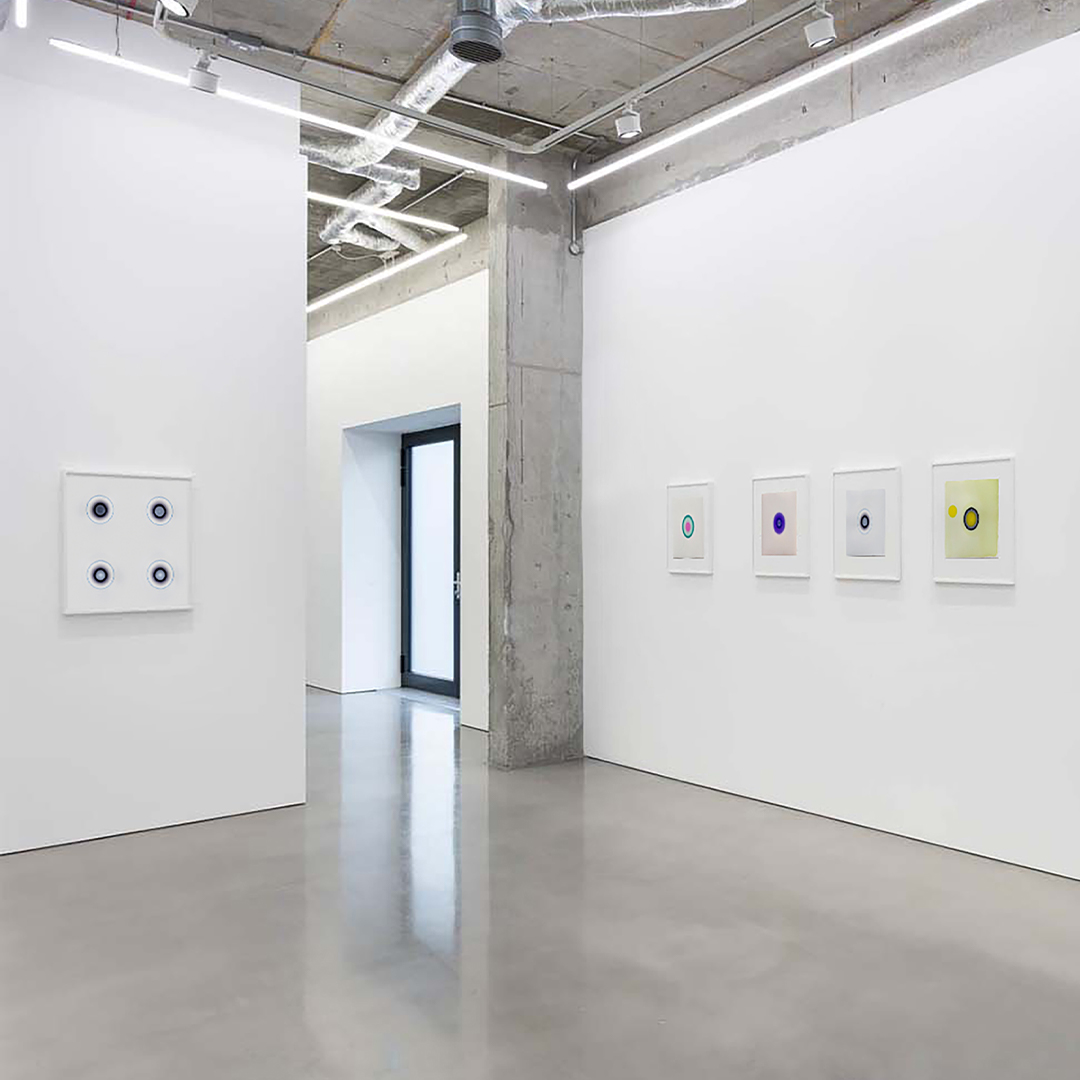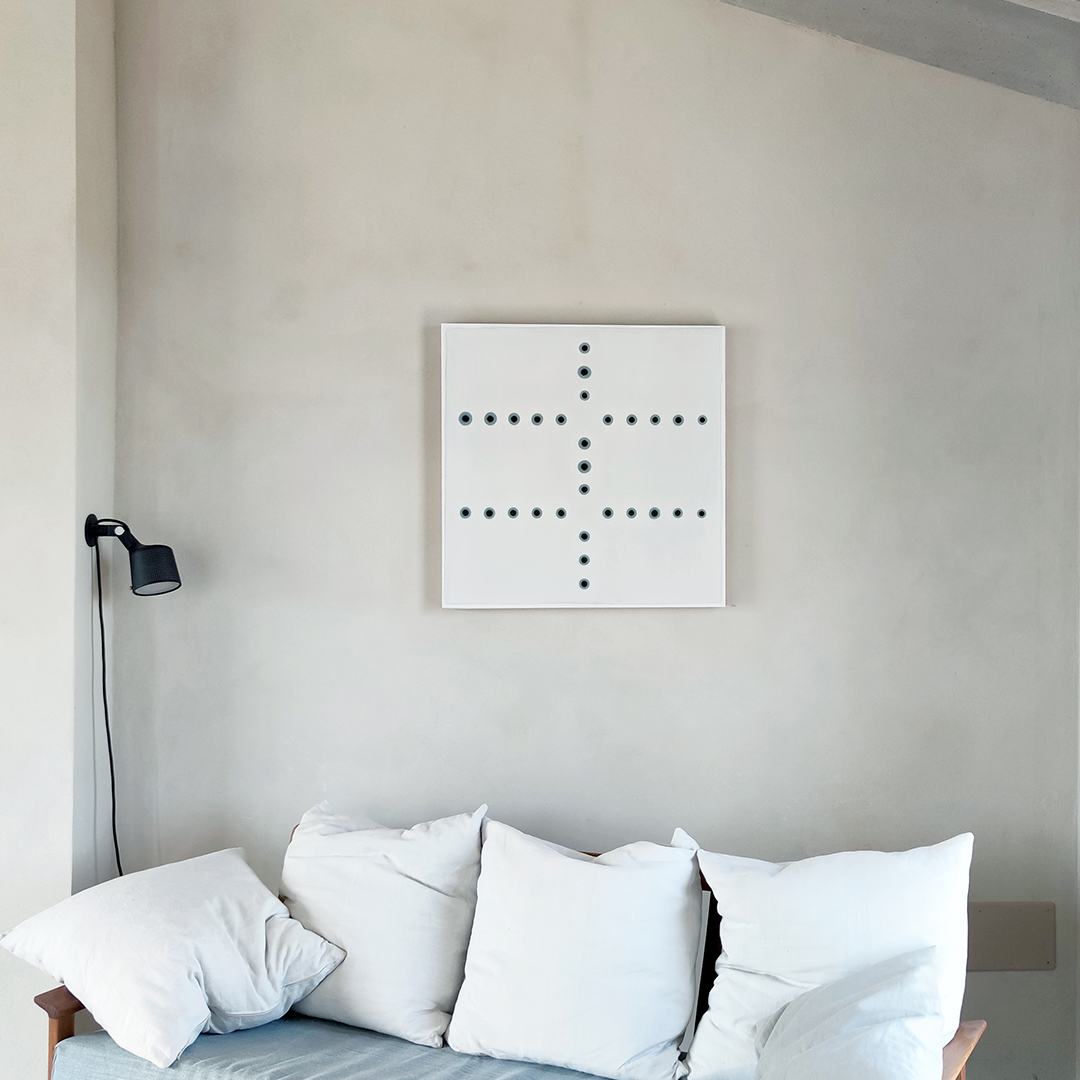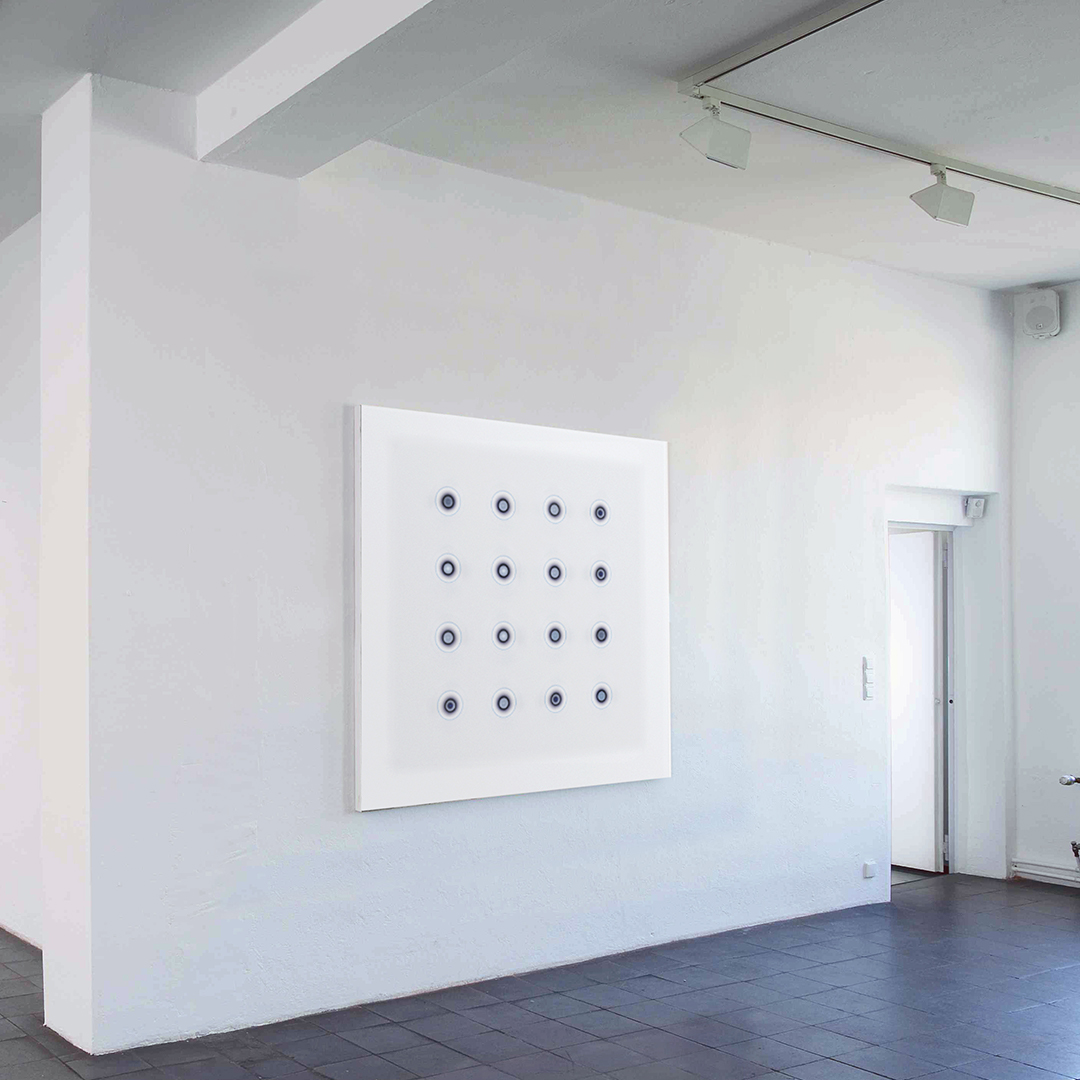one drop
a minimal amount of material
to drop
a minimal artistic act
the drop
an entire universe
drop in
More insights
Excerpts from a conversation with art historian Achim Steiner
How do you get completed drops?
“I determine the exact color mixture. What happens next, I cannot control 100% – the process is influenced by many different factors: humidity, air pressure, room temperature, paper quality, etc. Therefore, it often takes hours and many tests to get a drop to spread out into perfect harmony. Then it is numbered, dated and included in the drop.in.a.drop series.
It is a controlled coincidence which cannot be repeated – it is really unique. Sometimes I hold my breath unconsciously while I watch how the center spreads out further and further. To observe this is like a little meditation. That is how I got the idea to film the development of the drop. The film and the finished watercolor have become one.”
You also set the film to music?
“Yes! While working I usually listen to electronic music– a rather minimalistic kind. I noticed how certain music intensified the observation of the drop. Hence, the idea to set the filming of the drop to music was born. In some cases, the music was specially composed for the drop. The musicians receives the film in advance and they set music to the drop. In other cases, I hear a sound that feels suitable and I ask the composer if I can use the piece of music for my drop.”
You also make larger works?
“Yes, once the drop is numbered I conserve the color mixture in a small pot. So I can use it to compose larger works as well. Thus, I have an archive…”
More insights
Excerpts from a conversation with art historian Achim Steiner
How do you get completed drops?
“I determine the exact color mixture. What happens next, I cannot control 100% – the process is influenced by many different factors: humidity, air pressure, room temperature, paper quality, etc. Therefore, it often takes hours and many tests to get a drop to spread out into perfect harmony. Then it is numbered, dated and included in the drop.in.a.drop series.
It is a controlled coincidence which cannot be repeated – it is really unique. Sometimes I hold my breath unconsciously while I watch how the center spreads out further and further. To observe this is like a little meditation. That is how I got the idea to film the development of the drop. The film and the finished watercolor have become one.”
You also set the film to music?
“Yes! While working I usually listen to electronic music– a rather minimalistic kind. I noticed how certain music intensified the observation of the drop. Hence, the idea to set the filming of the drop to music was born. In some cases, the music was specially composed for the drop. The musicians receives the film in advance and they set music to the drop. In other cases, I hear a sound that feels suitable and I ask the composer if I can use the piece of music for my drop.”
You also make larger works?
“Yes, once the drop is numbered I conserve the color mixture in a small pot. So I can use it to compose larger works as well. Thus, I have an archive…”
About Julia
Julia did her Master of Art at the Art Academy in Düsseldorf. She works as an artist in Düsseldorf and Mallorca. In addition to art, she loves to deal with life’s elementary questions and to find the answers in the experience of meditation. Another passion is electronic music.
Drop.in.a.drop is a project that she started as a social media experiment, to keep in touch with artlovers around the world.




